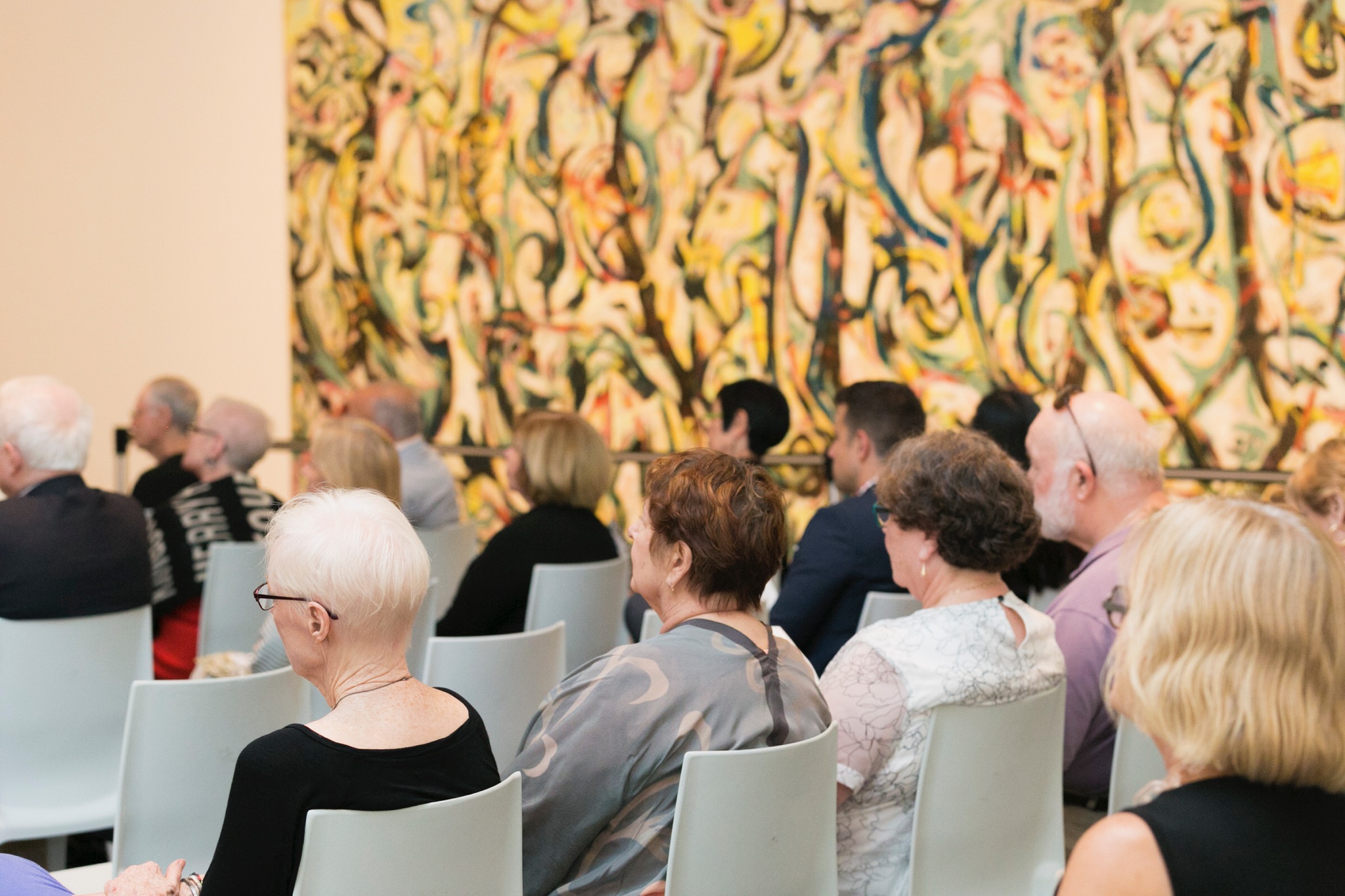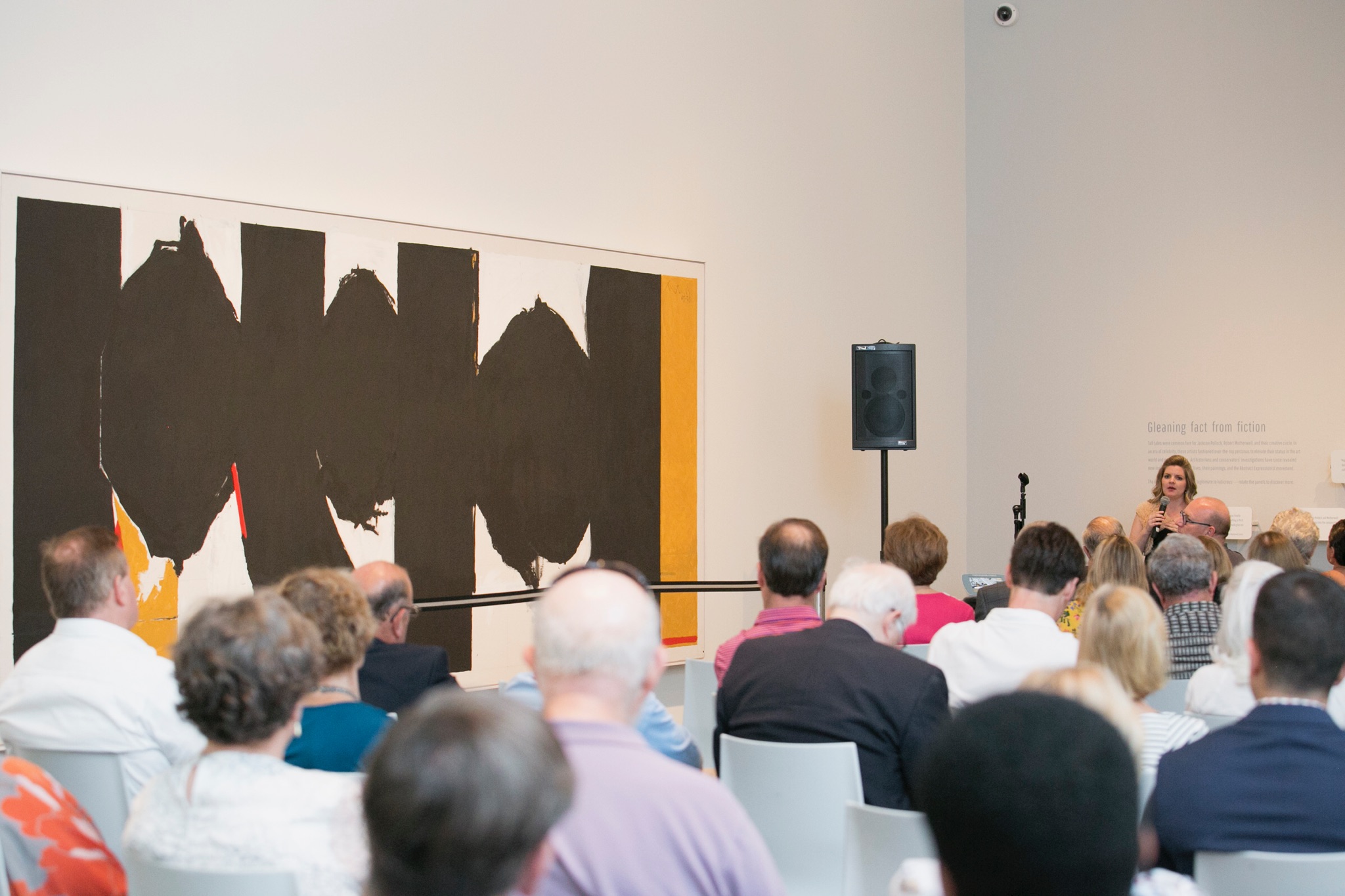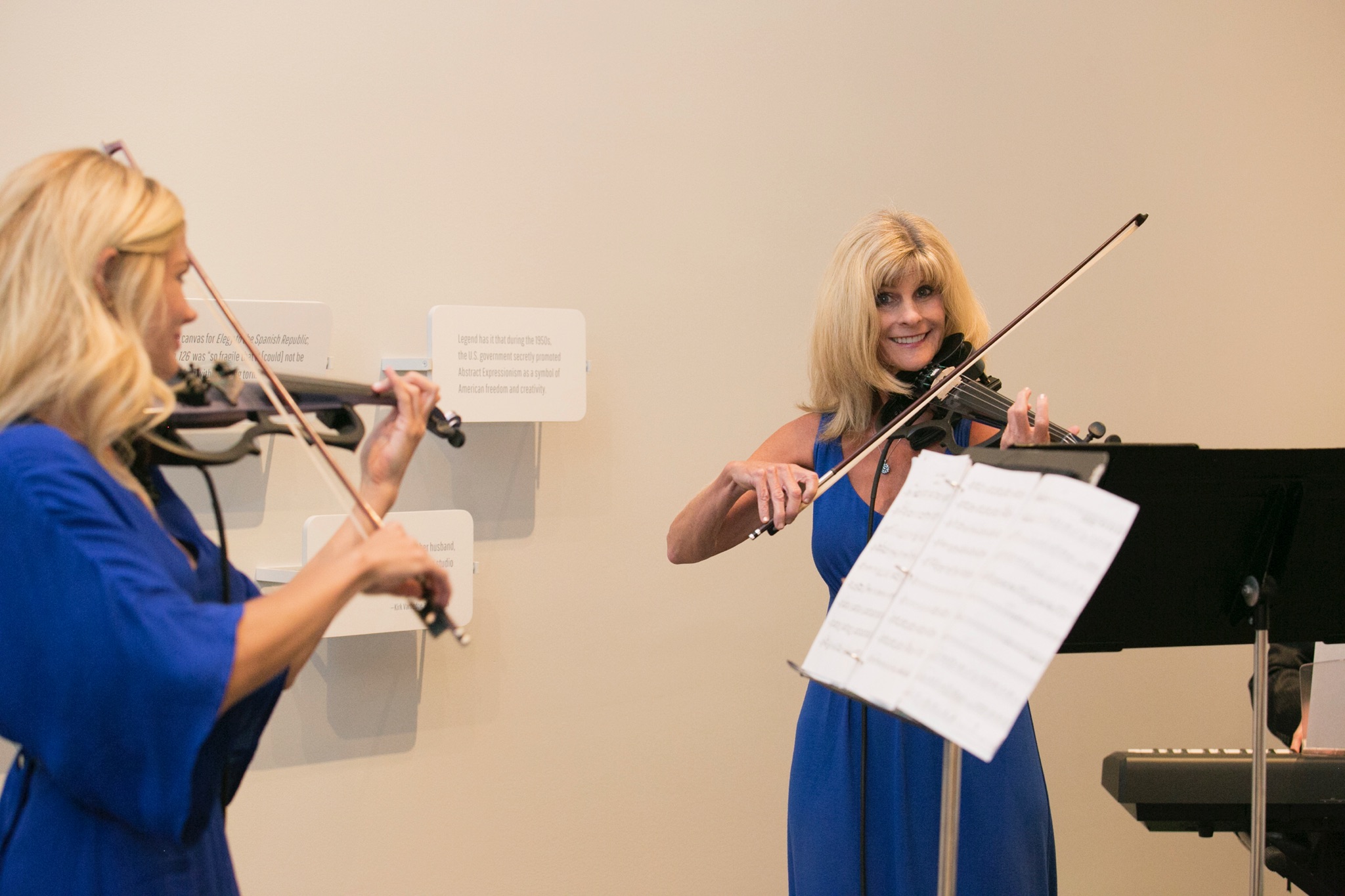The Music Behind the Masters
“Painting is self-discovery. Every good artist paints what he is.”
-Jackson Pollock
Jackson Pollock, arguably one of the most famous American artists of all time, still draws attention from art aficionados even now, over a half century after his death. Uptown Violins member Sherèe Lutz recently curated the exhibition Pollock and Motherwell: Legends of Abstract Expressionism for the Nelson Atkins Museum of Art, which is on display in Kansas City through October 29th. While looking into the men behind the legends, she examined their many sources of inspiration, including the music which surrounded their work. She recently gave a presentation on these two works, Pollock’s Mural, 1943, and Motherwell’s Elegy to the Spanish Republic, No. 126 (1965-75), in the gallery where the two paintings are displayed. She was accompanied by Allison and Brittany Peterson on violin, as well as pianist Terry Glanville and drummer Rod Lincoln.
Ashley: Sherèe, can you describe the two paintings a bit, in layman’s terms?
Sherèe: Both of the paintings in the exhibition are what we would call monumental in scale. Larger-than-life in some ways. They are roughly 10 feet tall by 20 wide! They both are abstract with very little representational imagery. You would not see faces, or flowers, or a landscape etc., but rather, color, line and form. Pollock’s Mural is very freewheeling! Swirling colors and forms stretch across the entire canvas surface. Motherwell’s Elegy to the Spanish Republic, No. 126 is primarily black-and-white with strong verticals. It also has repeated red and ocher accents that move the eye across the painting.
A: What do you find most striking about Pollock’s work? And Motherwell’s?
S: To me, the most striking thing about this particular Pollock painting is that it is the first known use for him to fling paint onto the canvas surface. It points to techniques he would later use that made him so famous. I am dumbfounded by how Motherwell was able to achieve the most matte finish with his black paint meaning no shine on it whatsoever. This is nearly impossible at this scale!
A: During what time periods were the two works painted, and what were some of the cultural influences surrounding them?
S: The paintings could be almost considered bookends to what we might call the mid-20th century. Pollock’s Mural was early and Motherwell’s Elegy was towards the end of the period. The cultural influences in this period are far ranging, but being shortly after WWII, post-war trauma definitely played an influence. Particularly, it brought the leading European modernists to New York fleeing persecution in the 30s and 40s. These men had a large impact on the younger generation of American artists. But the young Americans pushed the boundaries even farther, removing almost all representational imagery. In fact, even the US government used this style of painting to promote the freedom that Americans had to paint however they wanted in contrast to the Communist Realist style of the USSR during the Cold War.
A: What music did you select to accompany your presentation of the paintings?
S: I selected a variety of music to accompany my presentation! Motherwell was well educated and very well traveled. He spent time in Europe and was quite influenced by historic European culture. In fact, he has a different collage series where he titled some of the works with classical composers’ names such as Bach and Mozart. So Brittany played the first movement of Mozart’s Concerto for Violin in D Major, and then she and Allison played Bach’s Violin Concerto for Two Violins in d minor. But then we shifted focus to Pollock who was an aficionado of jazz. He had a very large collection of historic jazz albums including big names such as Armstrong, Parker, and Ellington! Brittany had arranged a wonderful jazz medley that included works by each! Finally, we discussed how both artists had an influence on a later generation of artists, including some Pop movement artists. So we could not resist playing some pop songs for our audience as well!
A: Apparently at the end of your presentation, you took Allison’s violin and began to play with Brittany as a surprise. How did the audience respond?
S: I think they thought it was fun! They did not know that Uptown Violins was my family’s group that I play with, so it made it fun to play both role as curator and then performer for one song.
A: Do you have any final thoughts you would like to share about the exhibition?
S: I think both the paintings display innovation. It is always good to push yourself and try new things! You never know what might catch on!
We at Uptown Violins have been thrilled to collaborate with the Nelson-Atkins Museum of Art in Kansas City! We believe it is important to foster a connection between the arts, both musical and visual. Please come check out this wonderful exhibition!








